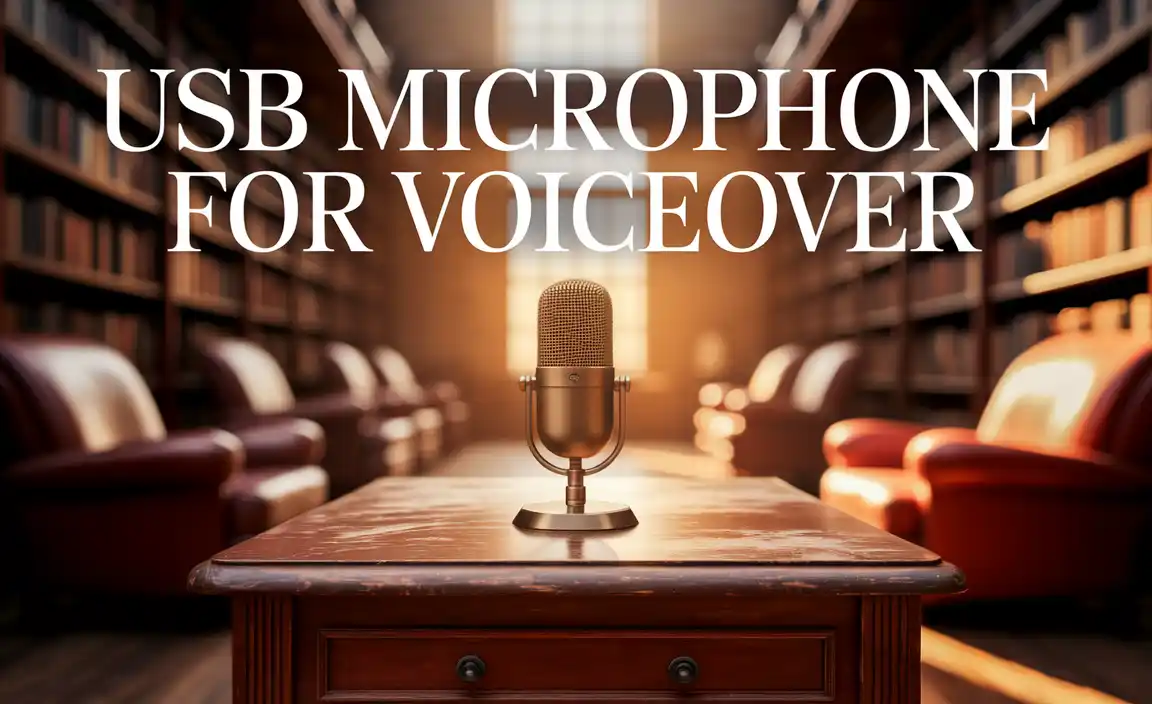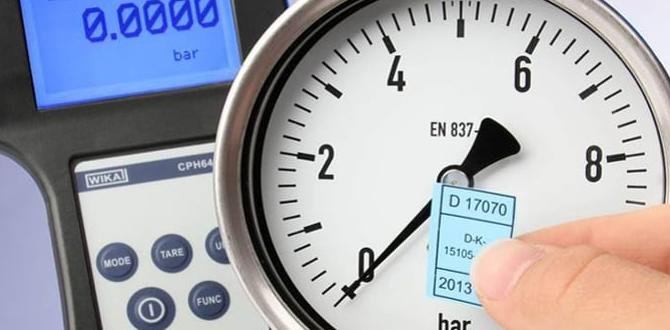Struggling with garbled conference calls? A dynamic microphone can be your secret weapon for crystal-clear audio, cutting through background noise and ensuring everyone hears you perfectly. It’s a fantastic upgrade for any home office, offering robust performance without breaking the bank. Let’s get your voice heard loud and clear!
Are your work-from-home meetings often plagued by muffled voices and distracting background sounds? You’re not alone! A clear voice makes all the difference in getting your point across and feeling connected with your team. Many people overlook their microphone, assuming their computer’s built-in one is good enough. More often than not, it’s not. This can lead to frustration, misunderstandings, and even missed opportunities. But don’t worry, improving your conference call audio is easier than you think. We’ll guide you through setting up a dynamic microphone, transforming your meetings into productive and enjoyable experiences. Get ready to sound like a pro!
Why Choose a Dynamic Microphone for Conference Calls?
When it comes to making your voice heard clearly during virtual meetings, a dynamic microphone is often an unsung hero. Unlike condenser microphones, which are super sensitive and pick up every tiny detail (including that noisy air conditioner or the dog barking next door), dynamic mics are built to handle loud sounds and reject background noise. This makes them incredibly robust and forgiving, perfect for less-than-ideal home office environments. They don’t require special phantom power, making setup a breeze, and their durability means they can withstand the rigors of daily use. For everyday conference calls, where clarity and a focus on your voice are paramount, a dynamic microphone is a smart, practical, and often budget-friendly choice.
The Magic Behind Dynamic Microphones
So, how do these workhorses of the audio world manage to sound so good and reject noise? It all comes down to their construction. Inside a dynamic microphone, there’s a diaphragm (a thin, flexible material) attached to a voice coil. This coil sits within a magnetic field. When sound waves hit the diaphragm, they cause it to move. This movement of the coil within the magnetic field generates a small electrical signal that’s sent out as your voice’s audio. Think of it like a tiny generator powered by your voice!
This electromagnetic design has a few key advantages for conference calls:
- Durability: They can handle high sound pressure levels without distorting, meaning even if you speak loudly, they won’t crackle.
- Noise Rejection: Their relatively simple design and how they capture sound make them less sensitive to ambient noise compared to condensers. They focus on the sound directly in front of them.
- No External Power Needed: Most dynamic mics don’t require phantom power (a common feature on professional audio interfaces that supplies voltage to the microphone). They plug in and work with standard audio inputs.
- Affordability: Generally speaking, dynamic microphones tend to be more budget-friendly than their condenser counterparts, offering excellent value.
Top Reasons to Use a Dynamic Mic for Virtual Meetings
Choosing the right microphone for your conference calls can significantly boost your professionalism and the effectiveness of your communication. Here’s why a dynamic microphone often steals the show for this specific application:
1. Superior Background Noise Rejection
This is arguably the biggest win for dynamic mics in a home office setting. If you’re not in a perfectly soundproof studio, there’s background noise. Whether it’s traffic outside, the hum of an appliance, or family members in another room, a dynamic microphone is designed to focus on the sound directly in front of it. This directional pickup pattern means your voice takes center stage, while much of the distracting ambient noise fades into the background. This is crucial for keeping participants focused and ensuring your message isn’t lost amidst household sounds.
2. Clear and Present Vocal Tone
Dynamic microphones are known for producing a warm, present, and natural vocal sound. They excel at capturing the nuances of speech without sounding overly bright or harsh. This clarity ensures that your colleagues can easily understand your words, which is fundamental for effective collaboration and avoiding misinterpretations during important discussions.
3. Ease of Use and Setup
For beginners, the plug-and-play simplicity of most dynamic microphones is a huge relief. Since they don’t require phantom power, you can often connect them directly to your computer’s microphone input (though using a USB audio interface is often recommended for best results, which we’ll cover). This minimal setup means less technical fuss and more time focusing on your work. They are generally hardy and don’t require delicate handling, making them a practical everyday tool.
4. Robustness and Reliability
Home offices can be busy places. Dynamic microphones are built to be tough. They can handle being moved around, placed near loud sound sources (like the speaker on your computer if you’re not using headphones), and generally endure daily use without easily being damaged. This makes them a dependable choice for a tool you’ll likely be using every day.
5. Excellent Value for Money
When you consider the performance boost you get in terms of clarity and noise rejection, dynamic microphones offer exceptional value. Many industry-standard dynamic mics are surprisingly affordable, making them an accessible upgrade for anyone looking to improve their conference call experience without a significant investment. You get professional-sounding audio without a professional-level price tag.
Types of Dynamic Microphones for Conference Calls
While the core technology is the same, dynamic microphones come in a few variations that are particularly suited for conference calls. Understanding these differences will help you pick the best one for your needs.
Handheld Dynamic Microphones
These are the classic microphones you often see singers using on stage or reporters holding. For conference calls, they work wonderfully when mounted on a desk stand. They are typically very directionally sensitive, meaning they pick up sound from the front very well and reject sound from the sides and rear. This makes them excellent for isolating a single speaker’s voice.
Pros for Conference Calls:
- Excellent background noise rejection.
- Durable and robust.
- Often very affordable.
- Warm, clear vocal reproduction.
Cons for Conference Calls:
- Can be bulky when on a stand.
- Might require a bit more effort to position correctly.
Boundary (PZM) Microphones
Boundary microphones, also known as Pressure Zone Microphones (PZMs), are designed to be placed on a flat surface, like a desk or wall. The “boundary” effect helps to minimize phase cancellations, leading to a fuller, more natural sound, especially in semi-challenging acoustic environments. For conference calls, a PZM placed in the center of a meeting table can capture multiple people speaking without them needing to huddle around a single point. However, they can sometimes pick up more desk noise (like typing) than a handheld mic.
Pros for Conference Calls:
- Good for capturing multiple speakers at a table.
- Less sensitive to exact positioning compared to handhelds.
- Minimal visual disruption on a desk.
Cons for Conference Calls:
- May pick up more desk vibrations or keyboard noise.
- Can be more sensitive to room acoustics than handhelds.
Gooseneck Microphones
These microphones are mounted on a flexible gooseneck stem, allowing for easy and precise positioning. They are common on podiums or in dedicated conference rooms. For a home office setup, a gooseneck mic mounted on a desk stand offers convenience and keeps the microphone close to your mouth, further enhancing signal-to-noise ratio and clarity.
Pros for Conference Calls:
- Highly adjustable for optimal placement.
- Keeps mic close for excellent voice pickup.
- Often have a relatively small visual footprint.
Cons for Conference Calls:
- Can vary in quality; some may be less robust.
- May still pick up some keyboard noise if positioned poorly.
For most individual users focused on clear solo conference calls, a good quality handheld dynamic microphone on a desk stand is often the go-to choice due to its excellent balance of clarity, noise rejection, and affordability.
Setting Up Your Dynamic Microphone: A Step-by-Step Guide
Getting your dynamic microphone ready for your next conference call is straightforward. We’ll cover the most common setups, whether you’re connecting directly to your computer or using a helpful audio interface.
What You’ll Need:
- Your Dynamic Microphone: The star of the show!
- Microphone Cable: Usually XLR, but some mics might use USB. Ensure it matches your mic and connection.
- Desk Stand or Mount: To hold your microphone steady.
- Computer: Your trusty work companion.
- Optional: USB Audio Interface: Bridges the gap between your mic and computer, often improving sound quality and volume. We’ll discuss this more in the next section.
- Optional: Headphones: Crucial for monitoring your audio and preventing echo.
Step 1: Position Your Microphone
First, place your microphone on its stand. Position it about 6-12 inches (15-30 cm) from your mouth. Angle it slightly to the side of your mouth rather than directly in front. This helps prevent “plosives” – those harsh popping sounds from ‘p’ and ‘b’ sounds. Experiment with the distance and angle to find what sounds best and feels comfortable.
Step 2: Connect Your Microphone
If your microphone is XLR (the most common type for dynamic mics):
- Connect one end of your XLR cable to the microphone.
- Connect the other end of the XLR cable to your audio interface or directly to your computer’s microphone input if it has an XLR port (less common).
If your microphone is USB:
- Connect the USB cable to your microphone.
- Connect the other end of the USB cable to an available USB port on your computer.
Step 3: Connect Your Audio Interface (If Using One)
If you’re using a USB audio interface:
- Connect your XLR microphone cable to the “Mic In” or “XLR Input” on the interface.
- Connect the audio interface to your computer, usually via USB.
- Plug in your headphones to the audio interface’s headphone jack. This is important for monitoring your sound and preventing feedback.
Step 4: Connect Your Headphones
Always use headphones during conference calls. This prevents your microphone from picking up the audio from your speakers, which causes echo and can be very distracting for others. Plug your headphones into your computer’s headphone jack or, ideally, into your audio interface.
Step 5: Configure Your Computer Settings
Now, tell your computer to use your new microphone:
- Windows: Go to Settings > System > Sound. Under “Input,” select your dynamic microphone (it might be listed by its name or as your audio interface).
- macOS: Go to System Preferences > Sound > Input. Select your dynamic microphone from the list.
Step 6: Configure Your Conferencing Software
Open your favorite meeting app (Zoom, Microsoft Teams, Google Meet, etc.). Go into its audio settings and ensure your dynamic microphone is selected as the input device. You can usually perform a microphone test within the app to check your levels and clarity.
Step 7: Adjust Gain and Levels
This is a critical step to ensure your voice is neither too quiet nor too loud. Your audio interface or computer’s microphone input will have a “gain” or “level” control. Speak normally into the microphone. Adjust the gain until the audio meter in your conferencing software (or operating system) shows your voice peaking around -12 dB to -6 dB. This leaves plenty of headroom and prevents distortion.
Tip: A little goes a long way. It’s better to have your mic set a bit lower and let the conference software boost it slightly than to have it set too high and risk clipping (distortion).
Using a USB Audio Interface: Why It’s Worth It
While you can sometimes plug a dynamic XLR microphone directly into a computer’s built-in microphone jack, the results are often subpar. This is where a USB audio interface shines. Think of it as a translator and enhancer for your microphone.
A USB audio interface typically has an XLR input with a microphone preamplifier. This preamplifier boosts the microphone’s signal to a usable level for your computer. Better interfaces offer cleaner, quieter amplification than your computer’s built-in sound card. Many also include features like:
- Phantom Power: While dynamic mics don’t need it, it’s available if you ever decide to use a condenser mic.
- Headphone Output: For clear monitoring.
- Direct Monitoring: Allows you to hear yourself with zero latency (delay), which is invaluable for speaking naturally.
- More Control: Dedicated knobs for gain and volume give you precise control over your audio levels.
For a significant upgrade in sound quality, clarity, and volume control for your dynamic microphone, a simple, affordable USB audio interface is highly recommended. Popular choices for beginners include the Focusrite Scarlett Solo, Behringer U-Phoria UM2, or PreSonus AudioBox USB 96.
Choosing the Right Dynamic Microphone for Your Needs
With so many options out there, how do you pick the right dynamic microphone? Here are a few key factors to consider, along with some popular and well-regarded models that are great for conference calls.
Key Features to Look For:
- Polar Pattern: For conference calls, a cardioid polar pattern is usually best. This means the microphone primarily picks up sound from the front and rejects it from the sides and rear. Less ambient noise, more focused voice.
- Connector Type: Most professional dynamic mics use an XLR connector, which requires an audio interface or a computer with an XLR input. Some newer dynamic mics are USB-enabled, offering a more direct connection.
- Durability: Look for solid construction. Metal bodies are a good sign of a robust microphone.
- Price: Dynamic microphones range from very affordable to quite expensive. For typical business calls, you don’t need the most expensive option. Many excellent choices fall in the $50-$150 range.
- Brand Reputation: Stick with reputable audio brands that have a proven track record for quality and reliability.
Popular and Recommended Dynamic Microphones for Conference Calls:
Here’s a look at a few dynamic microphones that consistently get high marks for voice clarity and are fantastic for conference calls, ranging from budget-friendly to mid-range professional.
| Microphone Model | Type | Connection | Price Range (USD) | Ideal Use Case |
|---|---|---|---|---|
| Shure SM58 | Handheld Dynamic | XLR | $99 | Industry standard for vocals, excellent for voice clarity and durability. Requires an audio interface. |
| Sennheiser e835 | Handheld Dynamic | XLR | $99 | Similar to the SM58 but often with a slightly brighter, more present sound. Great for clear speech. Requires an audio interface. |
| Audio-Technica AT2040 | Handheld Dynamic | XLR | $89 | Designed specifically to offer professional vocal sound at an accessible price. Excellent for podcasting and clear voice work. Requires an audio interface. |
| Rode PodMic | Handheld Dynamic | XLR | $99 | Built for broadcast and podcasting, offering rich, detailed vocal reproduction and excellent noise rejection. Requires an audio interface. |
| Samson Q2U | Handheld Dynamic | XLR & USB | $69 | A fantastic all-rounder, offering both XLR and USB connections. Great value and easy to use, perfect for beginners. |
| Shure MV7 | Hybrid Dynamic | USB & XLR | $249 | A premium option with both USB and XLR. Excellent sound quality, intuitive touch panel, and great companion app. More of an investment. |
When looking at reviews, pay attention to how the microphone handles background noise and vocal articulation. For most business users, the Samson Q2U or the Shure MV7 are particularly compelling due to their dual connectivity, offering ultimate flexibility. However, if you’re looking for an XLR setup with an audio interface, the SM58, e835, AT2040, or Rode PodMic are all superb choices that will dramatically improve your conference call audio.





